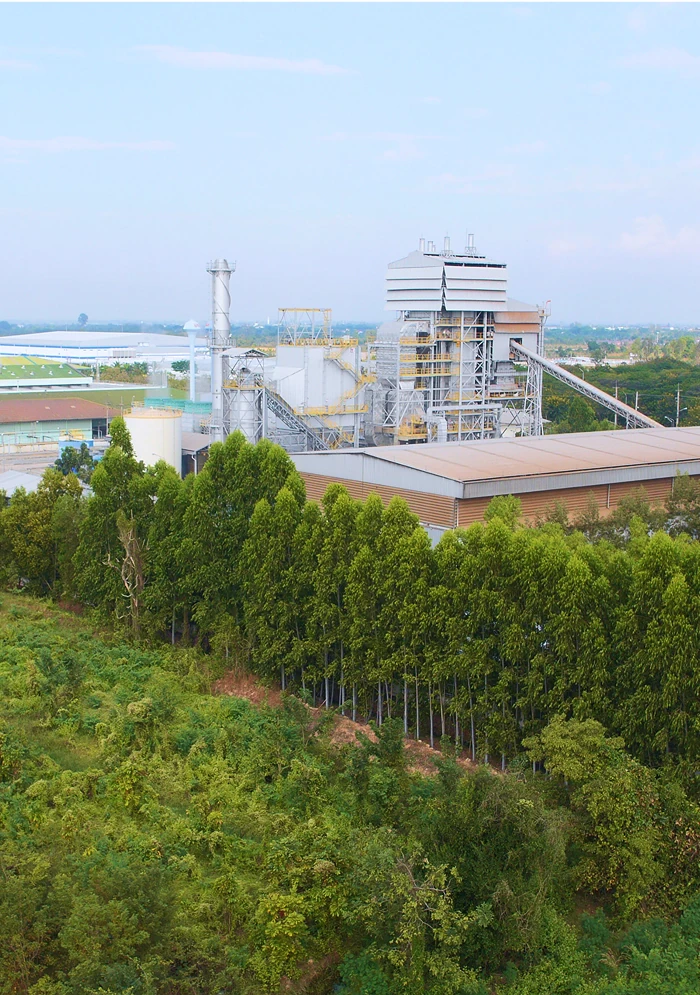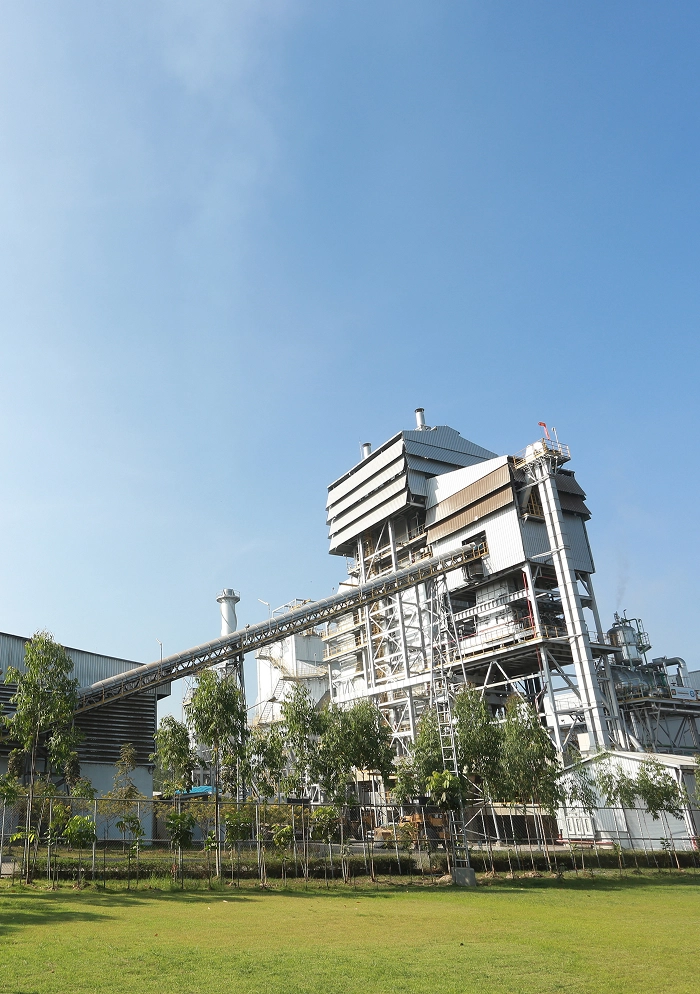GRI Standards Index

The GRI Standards provide a comprehensive framework for sustainability reporting, helping ensure organizational transparency and accountability.
The Standards enable organizations to disclose their economic, environmental, and social impacts in alignment with international best practices.
GRI Standards Index
| Disclosure | Description | Page |
|---|---|---|
| GRI 102 : General Disclosures | ||
| Organizational Profile | ||
| GRI 102-1 | Name of the organization | Sustainability Report 2024, Page 4 |
| GRI 102-2 | Activities, brands, products, and services | Sustainability Report 2024, Page 4 |
| GRI 102-3 | Location of headquarters | Sustainability Report 2024, Page 4 |
| GRI 102-4 | Location of operations | Sustainability Report 2024, Page 4 |
| GRI 102-5 | Ownership and legal form | Sustainability Report 2024, Page 4 |
| GRI 102-6 | Markets served | Sustainability Report 2024, Page 4 |
| GRI 102-7 | Scale of the organization | Sustainability Report 2024, Page 4 Sustainability Report 2024, Page 69-70 |
| GRI 102-8 | Information on employees and other workers | Sustainability Report 2024, Page 69-71 |
| GRI 102-9 | Supply chain | Sustainability Report 2024, Page 20 |
| GRI 102-10 | Significant changes to the organization and its supply chain | Sustainability Report 2024, Page 5 |
| Strategy | ||
| GRI 102-14 | Statement from senior decision-maker | Sustainability Report 2024, Page 2 |
| GRI 102-15 | Key impacts, risks, and opportunities | Sustainability Report 2024, Page 39-48 |
| GRI 102-55 | Sustainability Policy and Strategy | Sustainability Report 2024, Page 10-15 |
| Ethics and Integrity | ||
| GRI 102-16 | Values, principles, standards, and norms of behavior | Sustainability Report 2024, Page 3 |
| GRI 102-17 | Mechanisms for advice and concerns about ethics | Sustainability Report 2024, Page 53-54 |
| Governance | ||
| GRI 102-28 | Evaluating the highest governance body’s performance | Sustainability Report 2024, Page 4 Sustainability Report 2024, Page 36-38 |
| GRI 102-29 | Identifying and managing economic, environmental, and social impacts | Sustainability Report 2024, Page 9 Sustainability Report 2024, Page 18-19 |
| GRI 102-30 | Effectiveness of risk management processes | Sustainability Report 2024, Page 39-48 |
| GRI 102-31 | Review of economic, environmental, and social topics | Sustainability Report 2024, Page 9 |
| Stakeholder engagement | ||
| GRI 102-40 | List of stakeholder groups | Sustainability Report 2024, Page 28-31 |
| GRI 102-41 | Collective bargaining agreements | Sustainability Report 2024, Page 28-31 |
| GRI 102-42 | Identifying and selecting stakeholders | Sustainability Report 2024, Page 28-31 |
| GRI 102-43 | Approach to stakeholder engagement | Sustainability Report 2024, Page 28-31 |
| GRI 102-44 | Key topics and concerns raised | Sustainability Report 2024, Page 28-31 |
| Reporting practice | ||
| GRI 102-45 | Entities included in the consolidated financial statements | Sustainability Report 2024, Page 1 Sustainability Report 2024, Page 16-19 |
| GRI 102-46 | Defining report content and topic Boundaries | Sustainability Report 2024, Page 1 Sustainability Report 2024, Page 16-19 |
| GRI 102-47 | List of material topics | Sustainability Report 2024, Page 1 Sustainability Report 2024, Page 16-19 |
| GRI 102-48 | Restatements of information | Sustainability Report 2024, Page 1 Sustainability Report 2024, Page 16-19 |
| GRI 102-49 | Changes in reporting | Sustainability Report 2024, Page 1 Sustainability Report 2024, Page 16-19 |
| GRI 102-50 | Reporting period | Sustainability Report 2024, Page 1 Sustainability Report 2024, Page 16-19 |
| GRI 102-51 | Date of most recent report | Sustainability Report 2024, Page 1 Sustainability Report 2024, Page 16-19 |
| GRI 102-52 | Reporting cycle | Sustainability Report 2024, Page 1 Sustainability Report 2024, Page 16-19 |
| GRI 102-53 | Contact point for questions regarding the report | Sustainability Report 2024, Page 1 Sustainability Report 2024, Page 16-19 |
| GRI 200 : Economic | ||
| GRI 201 : Economic Performance | ||
| GRI 103 : | Management Approach | Sustainability Report 2024, Page 62-63 |
| GRI 201-1 | Activities, brands, products, and services | |
| GRI 205 : Anti-corruption | ||
| GRI 103 : | Management Approach | Sustainability Report 2024, Page 49-54 |
| GRI 205-3 | Confirmed incidents of corruption and actions taken | Sustainability Report 2024, Page 49-54 |
| GRI 300 : Environmental | ||
| GRI 301: Materials | ||
| GRI 103 : | Management Approach | Sustainability Report 2024, Page 124-125 |
| GRI 301-1 | Materials used by weight or volume | Sustainability Report 2024, Page 124-125 |
| GRI 301-2 | Recycled input materials used | Sustainability Report 2024, Page 105 |
| GRI 302: Energy | ||
| GRI 103 : | Management Approach | Sustainability Report 2024, Page 123-130 |
| GRI 302-1 | Energy consumption within the organization | Sustainability Report 2024, Page 123-130 |
| GRI 302-3 | Energy intensity | Sustainability Report 2024, Page 123-130 |
| GRI 302-4 | Reduction of energy consumption | Sustainability Report 2024, Page 123-130 |
| GRI 303 : Water | ||
| GRI 103 : | Management Approach | Sustainability Report 2024, Page 110-114 |
| GRI 303-1 | Water withdrawal by source | Sustainability Report 2024, Page 110-114 |
| GRI 303-2 | Water sources significantly affected by withdrawal of water | Sustainability Report 2024, Page 110-114 |
| GRI 303-3 | Water recycled and reused | Sustainability Report 2024, Page 110-114 |
| GRI 304 : Biodiversity | ||
| GRI 103 : | Management Approach | Sustainability Report 2024, Page 141-145 |
| GRI 304-2 | Significant impacts of activities, products, and services on biodiversity | Sustainability Report 2024, Page 141-145 |
| GRI 305 : Emissions | ||
| GRI 103 : | Management Approach | Sustainability Report 2024, Page 131-140 |
| GRI 302-1 | Direct (Scope 1) GHG emissions | Sustainability Report 2024, Page 137-138 |
| GRI 302-3 | Energy indirect (Scope 2) GHG emissions | Sustainability Report 2024, Page 137-138 |
| GRI 302-4 | GHG emissions intensity | Sustainability Report 2024, Page 137-138 |
| GRI 302-3 | Reduction of GHG emissions | Sustainability Report 2024, Page 137-138 |
| GRI 302-4 | Nitrogen oxides (NOx), sulfur oxides (SOx), and other significant air emissions | Sustainability Report 2024, Page 118-120 |
| GRI 306 : Effluents and Waste | ||
| GRI 103 : | Management Approach | Sustainability Report 2024, Page 110-118 |
| GRI 306-1 | Water discharge by quality and destination | Sustainability Report 2024, Page 110-118 |
| GRI 306-2 | Waste by type and disposal method | Sustainability Report 2024, Page 110-118 |
| GRI 306-5 | Water bodies affected by water discharges and/or runoff | Sustainability Report 2024, Page 110-118 |
| GRI 307 : Environmental Compliance | ||
| GRI 103 : | Management Approach | Sustainability Report 2024, Page 109-110 |
| GRI 307-1 | Non-compliance with environmental laws and regulations | Sustainability Report 2024, Page 109-110 |
| GRI 308 : Supplier Environmental Assessment | ||
| GRI 103 : | Management Approach | Sustainability Report 2024, Page 21-27 |
| GRI 308-1 | New suppliers that were screened using environmental criteria | Sustainability Report 2024, Page 21-27 |
| GRI 400 : Social | ||
| GRI 401 : Employment | ||
| GRI 103 : | Management Approach | Sustainability Report 2024, Page 69-73 |
| GRI 401-1 | New employee hires and employee turnover | Sustainability Report 2024, Page 69-73 |
| GRI 403 : Occupational Health and Safety | ||
| GRI 103 : | Management Approach | Sustainability Report 2024, Page 89-96 |
| GRI 403-2 | Types of injury and rates of injury, occupational diseases, lost days, and absenteeism, and number of work-related fatalities | Sustainability Report 2024, Page 89-96 |
| GRI 403-3 | Workers with high incidence or high risk of diseases related to their occupation | Sustainability Report 2024, Page 89-96 |
| GRI 404 : Training and Education | ||
| GRI 103 : | Management Approach | Sustainability Report 2024, Page 79-88 |
| GRI 404-1 | Average hours of training per year per employee | Sustainability Report 2024, Page 79-88 |
| GRI 404-2 | Programs for upgrading employee skills and transition assistance programs | Sustainability Report 2024, Page 79-88 |
| GRI 404-3 | Percentage of employees receiving regular performance and career development reviews | Sustainability Report 2024, Page 79-88 |
| Human Right Assessment | ||
| GRI 412-1 | Operations that have been subject to human right reviews or impact assessment | Sustainability Report 2024, Page 64-68 |
| GRI 412-2 | Employee training on human right policies or procedures | Sustainability Report 2024, Page 64-68 |
| Local Community | ||
| GRI 413-2 | Operations with Significant actual and potential negative impacts on local Communities | Sustainability Report 2024, Page 97-108 |
| GRI 414 : Supplier Social Assessment | ||
| GRI 103: | Management Approach | Sustainability Report 2024, Page 21-26 |
| GRI 414-1 | New suppliers that were screened using social criteria | Sustainability Report 2024, Page 21-26 |
| GRI 419 : Socioeconomic Compliance | ||
| GRI 103: | Management Approach | Sustainability Report 2024, Page 64-65 |
| GRI 419-1 | Non-compliance with laws and regulations in the social and economic area | Sustainability Report 2024, Page 68 Sustainability Report 2024, Page 108 |
| GRI-G4 Electric Utilities Sector Disclosures | ||
| EU 1 | Installed capacity, broken down by primary energy source and by regulatory regime | Sustainability Report 2024, Page 4 |
| EU 5 | Allocation of CO2e emissions allowances or equivalent, broken down by carbon trading framework | Sustainability Report 2024, Page 137-138 |
| EU 10 | Planned capacity against projected electricity demand over the long term, broken down by energy source and regulatory regime | Sustainability Report 2024, Page 125-127 |
| EU 11 | Average generation efficiency of thermal plants by energy source and by regulatory regime | Sustainability Report 2024, Page 125-127 |
| EU 21 | Disaster/Emergency Planning and Response | Sustainability Report 2024, Page 39-48 |
| EU 30 | Average plant availability factor by energy source and by regulatory regime | Sustainability Report 2024, Page 127 |






